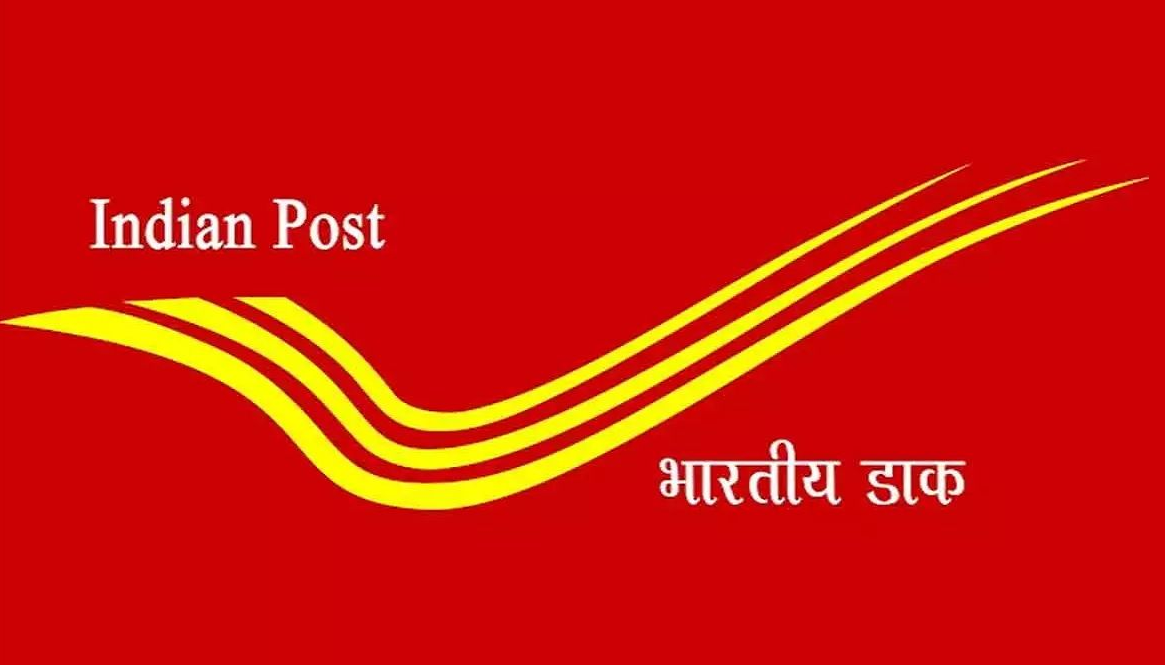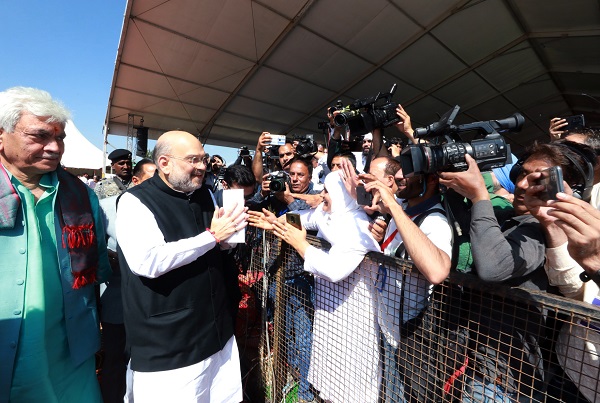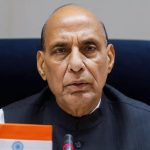WORLD POST DAY
World Post Day is celebrated each year on 9th October, the anniversary of the establishment of the Universal Postal Union in 1874 in the Swiss Capital, Bern. It was declared World Post Day by the UPU Congress held in Tokyo, Japan in 1969. Since then, countries across the world participate annually in the celebrations. The purpose of World Post Day is to bring awareness to the Post’s role in the everyday lives of people and businesses, as well as its contribution to global social and economic development.
India Post is a government-operated postal system in India, part of the Department of Post under the Ministry of Communications. Generally known as the Post Office, it is the most widely distributed postal system in the world. Warren Hastings had taken initiative under East India Company to start the Postal Service in the country in 1766. It was initially established under the name “Company Mail”. The first postal service for the public was established in Kolkata. In 1854, the country became the first one in Asia to issue postage stamps from its post office in Sindh (now in Pakistan). It was the year of those half anna stamps, the Indian Post Office Act, and mail deliveries through railway and seaways. It was later modified into a service under the Crown in 1854 by Lord Dalhousie. Dalhousie introduced uniform postage rates (universal service) and helped to pass the India Post Office Act 1854 which significantly improved upon 1837 Post Office act which had introduced regular post offices in India.
For more than 150 years, the Indian Postal Service has helped the country to engage in communication and social-economic development. It has succeeded in touching the lives of people across the country from delivering mails to accepting deposits and providing retail services like bill collection, sale of forms, Insurance schemes, etc. The number of post offices was 23,344 when India became independent in 1947 and these were primarily in urban areas. With 1,57,000 post offices , India Post is the widest postal network in the world. We’ve heard and remember stories of 10 paisa postcards and yellow envelopes, about money orders being received by working people, farmers and parents, soldiers in glacier and boarders receiving letters from their wives and children, reading words of love and wait, it would bring a smile to their faces and would keep them strong and telegraph messages. Waiting for that one letter to arrive with the postman on their doorstep to penning down their next without any expectations of receiving an immediate reply, there was a time when Indians happily treasured their relationship with post offices, until telephones and e-mails entered their lives.
With more than one billion post offices throughout the world, the postal network is the biggest physical network in the world. Post offices are everywhere, from the capitals of bigger industrialized countries to small rural towns of least developed countries. In outlying areas, they are often the only public service available and in many cases, they constitute a vital channel to communicate and exchange goods between communities. Billions of people visit post offices every year for a reason or another. The Victorian Crown type was the first Letter Box imported to India in 1856-57. This was followed by the Lotus type Letter Box, also known as the Penfold Letter Box, after its designer. For as long as humans have been on this planet, forms of communication invented —from smoke signals and messenger pigeons to the telephone and email—that have constantly evolved how we interact with each other. One of the biggest developments in communication came in 1831 when the electric telegraph was invented. While post existed as a form of communication before this date, it was electrical engineering in the 19th century which had a revolutionary impact. Now, digital methods have superseded almost all other forms of communication, especially in business. Picking up the phone is a rare occurrence too—instead, I FaceTime, Zoom, or join a Google Hangout. When we look back at how communication has advanced over the years, it really is quite incredible.
Since the mid-1990s, the Internet has had a revolutionary impact on communication, including the rise of near-instant communication by electronic mail, instant messaging, voice over Internet Protocol (VoIP) telephone calls, two-way interactive video calls, discussion forums, blogs, and social networking. The internet has made communication easier and faster, it’s allowed us to stay in contact with people regardless of time and location. It’s accelerated the pace of business and widened the possibilities within the enterprise space. It’s allowed people to find their voice and express themselves through social media, YouTube and memes. The internet has connected and divided us like nothing before. From pigeon to post, from bare foot to air route and from manual to digital, the importance of India Post serving the mankind cannot be undermined.
The digital revolution is rapidly changing the world of communication and commerce. This is triggering fundamental changes in the postal ecosystem and accelerating the electronic diversion of traditional hard copy mail. Digitalisation has changed the role of the postal sector as mail volumes decline and parcel volumes grow. Home delivery is clearly the most preferred option for consumers and delivery companies are using technology to introduce new added-value services. As a general trend, technology has helped the parcel delivery chain to become receiver centralized. Consumers, who act as receivers, are not only better informed about the status of their delivery via tracking, they now also have the option to change the delivery process by redirecting a parcel to a different delivery point, or postpone delivery if they desire so. Different kinds of technologies are enabling postal and parcel carriers to make their operations more efficient and create value added services in delivery.
The internet revolution has transformed the economics of postal services around the world. Digital transformation, in recent years, has led to an exponential growth in the use of mobile phones and mobile commerce. According to research conducted, in just two years, mobile transactions have increased from 8% to over 18%. Research has also estimated that in 2020, for the first time, more than 1 billion people worldwide will use a mobile payment app to pay in-store at least every six months. In 2023, it is estimated that there will be 1.31 billion proximity mobile payment transaction users worldwide, up from 950 million users in 2019. The internet has reduced the demand for letter mail because emails are a cheaper and quicker means of communication. And that online shopping has taken a growing share of the retail market and has boosted the demand for parcel mail. With everything going online and people making decisions based on online presence and utility, the Indian Postal Service doesn’t hold a strong position in the market. Many customers have turned away from postal services and approached towards other platforms which offer more services within the mobile commerce space, simply because they are more reliable, convenient and efficient. This has caused many postal organizations to have an identity crisis in response to trying to diversify and stay relevant to the changing needs of consumers.
In today’s digital era, postal services across the world are embracing digital transformation – using technology to improve business processes and meet the growing demands of digitally-savvy customers – to ensure they remain commercially viable into the future. In recent years, the postal sector has undergone radical changes, which have primarily been driven by operational and technological developments. Not only has the advent of Information and Communication Technology (ICT) added competition to the market, but it has also provided ample opportunity for the broadening and improvement of services and product range. Overall, the impact of technology on consumers of postal services has clearly been positive to date and will remain so in the years ahead.
Technology, primarily through the spread of the internet and mobile devices, has empowered consumers and transformed them from passive to active participants in the postal services market. With the rise of ecommerce, carriers have changed their focus from senders, the business customers, to receivers, the consumers receiving the goods. Carriers have used technology to make their postal operations more efficient and to improve or introduce innovative new products and services. Other new technologies are being tested and many of them will result in further improvements for consumers of postal services. Technology plays an overall positive role for postal services and acts as an enabler and a driver for better services for consumers. The benefits to date outweigh the risks and concerns. Looking ahead, technology will become more and more important for postal services, and further positive benefits for consumers are expected.
However, electronic media has its own limitations. It is quite impossible to send parcels through emails. The need for postal and courier services is thus highlighted. The Indian postal service has proved its efficiency in transporting various types of parcels to different parts of the world. Large business corporate requires the services of courier companies to transport goods of different varieties. It is essential to deliver goods to national and international destinations quite easily with the help of the courier companies. Although there has been a rise in the usage of electronic mail services all around the world, the significance of postal and courier services have not diminished. A large section of the population still utilizes postal and courier services for efficient transfer of goods and documents all across the world. The latest initiatives were implemented in 2017 in the form of DARPAN – Digital Advancement of Rural Post Office for A New India. A project aiming to improve and value add to the quality of services and to also achieve “financial inclusion” of the large unbanked rural population in India. The project saw the government investing 140 million rupees to provide low power technological solutions to the one hundred and twenty-nine thousand postal branch offices all over India. As of now, more than 50 thousand branch offices have migrated to the DARPAN project.
Again one of the recent developments in the field of Indian postal service sector is the collaboration of the India post and the Deutsche Post World Net. This collaboration provides an exemplary express delivery service to around 220 countries all over the world. The WorldNet Express is one of the most unique express delivery services and a joint mail product of the India post. The age of electronic media has showered its effect all over the country and affected the pivotal position of Indian postal service. Postal service in India once used to be the only means of communication as far as long distance correspondence is concerned. The new generation resorts to conveying messages via emails and text messages and very rarely through the traditional methods like post. The development of technology and the advent of electronic media have overshadowed the importance of postal and courier services to a certain degree. However, the functions of Indian postal service remain unhindered but a little shaken by a fall in popularity. Courier services still have solid ground to stand on as it continues to deliver goods to and fro across the country.
(M Ahmad is a regular writer for this newspaper and can be reached at [email protected])









